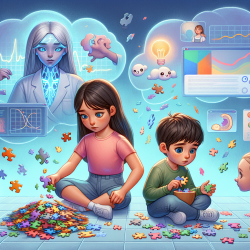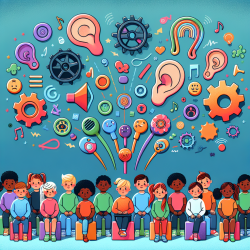Introduction
Developmental Language Disorder (DLD) affects a child's ability to learn and use language, often without an apparent cause. Recent research has begun to shed light on the neurobiological underpinnings of DLD, focusing on the cerebellar peduncles' role. These structures are crucial in connecting the cerebellum with other parts of the brain, contributing to sensorimotor skill learning, including language acquisition.
Key Findings from Recent Research
A recent study examined the microstructural properties of the cerebellar peduncles in children with DLD using diffusion-weighted imaging. The research involved 77 typically developing children and 54 children with DLD, focusing on the inferior, middle, and superior cerebellar peduncles.
- Inferior Cerebellar Peduncles (ICP): Children with DLD showed lower fractional anisotropy (FA) in the ICP, indicating disrupted axonal organization rather than differences in myelination.
- Middle and Superior Peduncles: No significant differences were found between children with DLD and typically developing children, suggesting that the olivocerebellar system might be more involved in DLD than the cortico-cerebellar circuits.
Implications for Practitioners
The findings suggest that atypical olivocerebellar connectivity, rather than cortico-cerebellar connections, characterizes DLD. For practitioners, this highlights the importance of considering the cerebellum's role in speech acquisition and development. Here are some ways practitioners can use this information:
- Targeted Interventions: Develop interventions that focus on enhancing sensory-motor integration, as the cerebellum plays a critical role in this area.
- Further Research: Encourage further research into the cerebellum's role in language disorders, which could lead to more effective therapies.
- Holistic Approach: Consider a holistic approach that integrates findings from neuroimaging studies to create comprehensive treatment plans.
Encouraging Further Research
While this study provides valuable insights, it also opens the door for further exploration. Future research could investigate the longitudinal development of cerebellar connectivity in children with DLD and explore how these differences evolve with age. Additionally, examining the interactions between cerebellar and cortico-striatal systems could provide a more comprehensive understanding of DLD.
To read the original research paper, please follow this link: Microstructural Properties of the Cerebellar Peduncles in Children with Developmental Language Disorder.










